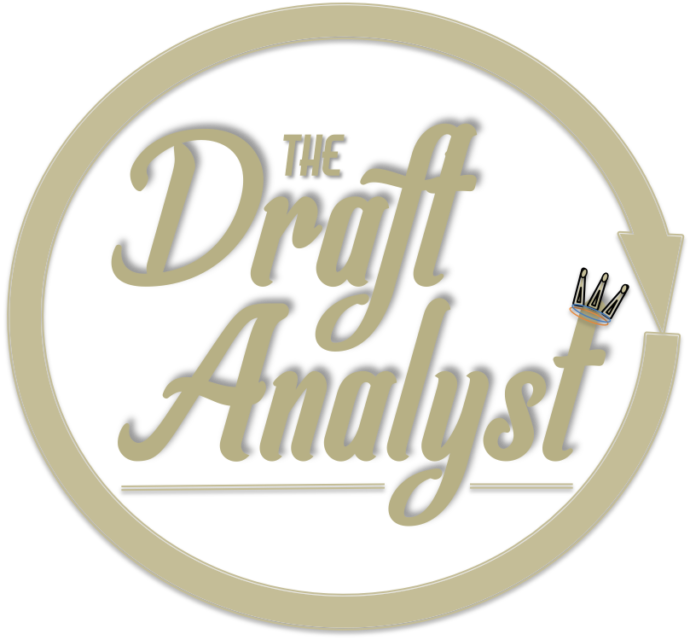Team Needs
FORWARDS
No. 1 Center
Draft Options: Dylan Strome, Matt Barzal, Pavel Zacha, Nicolas Roy, Travis Konecny
Top-6 Right Wing
Draft Options: Mitch Marner, Mikko Rantanen, Timo Meier, Jeremy Bracco, Evgeny Svechnikov
Defensive Specialist
Draft Options: Colin White, Glenn Gawdin, Cooper Marody, Brett McKenzie, Nick Betz
DEFENSEMEN
Top-pairing defender
Draft options: Noah Hanifin, Ivan Provorov, Zack Werenski, Jeremy Roy, Jakub Zboril
Reliable puck mover
Draft options: Noah Hanifin, Ivan Provorov, Zach Werenski, Thomas Chabot, Jeremy Roy
Shutdown defender
Draft options: Noah Hanifin, Ivan Provorov, Gabriel Carlsson, Brandon Carlo, Nicolas Meloche
SPECIAL TEAMS
Positionally-sound forwards
Draft options: Jansen Harkins, Jakob Forsbacka-Karlsson, Colin White, Mikhail Vorobyov, Brett McKenzie
Defensemen who can win puck battles
Draft options: Noah Hanifin, Ivan Provorov, Brandon Carlo, Noah Juulsen, Jonas Siegenthaler
Shot-blockers
Draft options: Zach Senyshyn, Glenn Gawdin, Nick Betz, Keegan Kolesar, Jesse Gabrielle
GOALTENDING
Solid backup
Draft options: Callum Booth, Adin Hill, Samuel Montembeault, Matej Tomek,
Bernier’s heir apparent
Draft options: Mackenzie Blackwood, Daniel Vladnar, Ilya Samsonov, Veini Vehvilainen
Depth option
Draft options: Nick McBride, Felix Sandstrom
Organization Overview
Forwards: Although William Nylander was drafted as a center, he played (and looked comfortable) on the wing when he came over to North America from Sweden in the middle of last season. The AHL-affiliate Toronto Marlies have some serious pop on the flanks but not much down the middle. Up at the parent club, Tyler Bozak is the incumbent No. 1 center and is in danger of not only losing his meal ticket on right wing, but getting traded himself. While Nazem Kadri is a capable and proven Top-6 pivot, the organization is screaming for a 20-22 minute center who can play in all situations. The UFA market for centers is very slim (Mike Fisher, Brad Richards and Antoine Vermette are the headliners), so look for the Leafs to address this glaring organizational hole on Draft Day.
Defense: It stinks. Every way imaginable. Toronto couldn’t keep the puck out of its net or remove it from its own zone. This team never had the puck, and when they did, it broke into a hundred pieces the few times they had the chance to move it out of harms way. The advanced stats are absolutely ghastly, and while its easy to pinpoint the shortcomings on the lack of effort from the forwards, the truth is that the defensemen were terrible at a) winning puck battles, b) corralling the puck after winning said puck battles and the ever-important c) moving the puck up the ice with accuracy. As golden a child Morgan Rielly is, even he was prone to these mistakes. The top focus of the 2015 draft should be to acquire puck movers who can win the board wars yet remain poised thereafter.
Goaltending: Jonathan Bernier has yet to turn 27 and is deserving of a new contract with at least five UFA years included. The pending RFA has proven he’s good enough to be a starter in this league, and with a decent defense and Babcock’s system likely diminishing zone time against, the Leafs look set in goal for the time being. They have two solid netminders in the system — Chris Gibson and Antoine Bibeau — both who played well in the AHL and are close to the age where they start tracking the puck better. Still, you can never have too much goaltending, so it would be wise for the Leafs to use a later round pick on a stopper.
Special Teams: Ahh, the silent killer. The Maple Leafs were in the bottom-20 for both power play and penalty kill success rates for the first time since the magical 2010-11 season. In fact, it should come as no surprise that the only season Toronto was top-15 in both power play (14th) and penalty killing (2nd) was (yup, you guessed it) 2012-13. The success was definitely short lived, as the Leafs in 2015 ranked 26th with the man advantage and 22nd while shorthanded. The latter was actually an improvement; since 2006, Toronto has ranked 24th or worse in PK% nine out of 10 times. Sadly, the 2015 Leafs produced the organization’s second-best wire-to-wire PK unit in 10 years. And they finished 22nd. The reasoning (if any) behind the futility? Not getting into shooting lanes, running around in coverage and losing puck battles are probably the biggest indicators.

